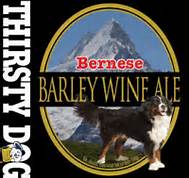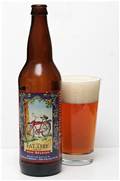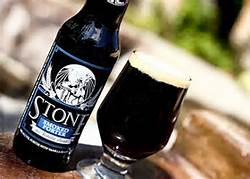Well, February has come and gone, and there weren’t too many highlights for the month. The weather here in Ohio was quite crappy, but that’s pretty much the case everywhere. Thankfully, the nearest Winking Lizard is only a hop, skip, and a jump from the homestead. That gave me plenty of excuse to work on my world beer tour, and with the help of my unofficial manager, Katina, we are going to add another 8 beers to our list, bringing our grand total to 24.
Aventinus (ABV 8) — This beer is an example of a Weizenbock. I am a huge fan of wheat beers, but Aventinus is a unique example because it shuns all of the traditional characteristics of a normal wheat beer. This beer is nice and dark instead of golden, and there was no fruity notes as one would expect with a wheat beer. But, Aventinus is an experience, and I found it to be unique and quite tasty. Just be forewarned if you think “weizen” is going to get you a traditional wheat beer — don’t forget the “bock” part of the name.
Unibroue La Fin du Monde (ABV 9) — This example of a Tripel is thick and golden. I found it to be very tart and fruity. There was some hoppiness, but not enough to dominate the overall flavor of the beer. This beer is really good. It is very smooth and its tartness is a nice change of pace without being overwhelmingly sweet. I highly recommend this beer if you haven’t tried one yet.
Anderson Valley Wild Turkey Stout (ABV 6.9) — This Imperial Stout pours nice and dark with a thick golden head. There were distinct chocolate and vanilla aromas as well as those same taste notes. This beer isn’t quite as thick as I expected, but that did not detract from the overall superior flavor of the beer. The bourbon barrel notes are not quite as prominent as some other bourbon barrel stouts, but were still present enough to add a little something to the overall flavor of the beer.
Thirsty Dog Bernese (ABV 10.5) — If you order this barleywine, brace yourself. It is very strong, and it is hoppy, hoppy, hoppy, hoppy, and also a little hoppy. Instead of a barleywine, I thought I might have been poured a glass of whiskey mixed with liquid grass. You had better LOVE IPAs if you’re going to tackle this beer. I don’t, so next time I’ll pass.
Great Lakes Conway’s Irish Ale (ABV 6.5) — This beer is an example of a red ale. It pours with a deep copper color that has a reddish tinge to it. The beer drinks smooth and is on the thin side of the spectrum. It is advertised as having a caramel and apple aroma, but I could not detect ANY aroma coming from this beer (maybe I was stuffy — it has been rather cold here) nor could I detect any aftertaste. This beer imparts its flavor on your tongue while it’s in your mouth, but the taste quickly excuses itself after you swallow. There was minimal to no hoppiness. This beer was a real pleasure to drink.
New Belgium Fat Tire (ABV 5.2) — I was at a loss with this amber ale. I felt there was virtually no taste to this beer. Once it slides of the tongue, any flavor it had was immediately gone. There was no hoppiness to this beer at all. This would be a fine beer for someone who doesn’t really like the flavor of beer to drink. Not very impressive, in my opinion.
Stone Smoked Porter with vanilla bean (ABV 5.9) — This example of a porter is one of my favorites so far. The beer pours very dark with a thick, sudsy head. This beer has a nice, thick texture and some deep, dark chocolate notes. Stone Smoked Porter is lightly carbonated so it is easy to drink. There is some slight bitterness on the back of the tongue with a hint of nutty aftertaste. This is one you gotta try if you get the chance.
Lindemans Framboise (ABV 4) — My wife actually drank this example of a fruit lambic, and she really enjoyed it. But, she doesn’t like beer, in general. That is how I think of Lindemans Framboise — a beer for those who do not like the taste of beer. I love beer, so to me this drink tastes like someone is drinking raspberry Kool-Aid from an unwashed beer mug — lots of fruit flavor with minimal beer characteristics. I am interested in trying other lambics, but this one is one that I will keep skipping.











